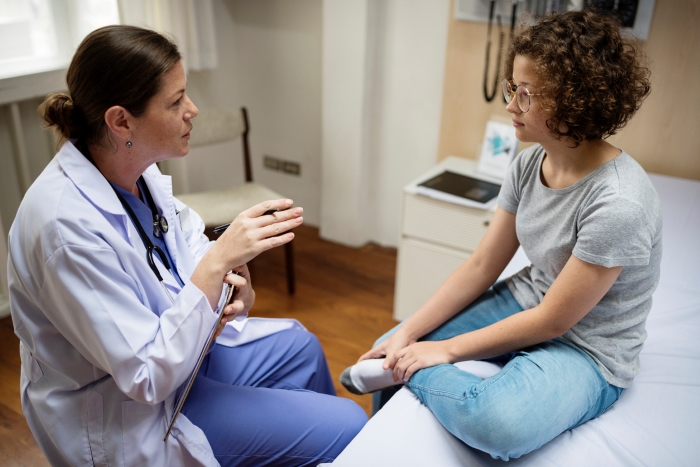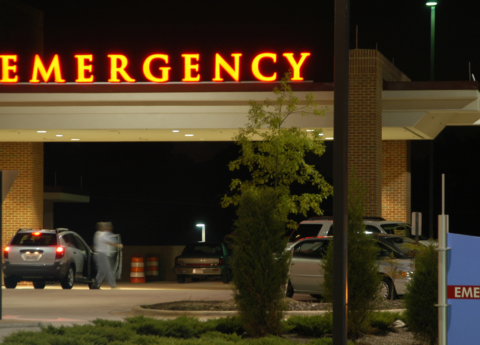Two years out from the Dobbs decision, a fuller picture of how people are faring in states like Kentucky that have total and near total abortion bans is emerging. An estimated 3,460 Kentuckians obtained an abortion in-state in 2020, an option that is no longer available. Estimates also show 950 abortions patients in Tennessee in 2020 were Kentucky residents as well as 70 in West Virginia and 200 in Indiana — all states that now have bans and are no longer an option for Kentuckians seeking abortion care.
Newly-available data and research shows:
- A dramatic increase in abortions obtained out of state, including by Kentuckians, which is a barrier for many seeking abortion care;
- Abortion funds inundated with requests for financial and travel assistance;
- Other negative health impacts, including reduced access to contraception and poorer mental health.
While these policies affect everyone seeking abortion services, for some individuals — those who live in certain parts of the state, have lower incomes, or face other structural barriers — it is particularly difficult, and even impossible, to navigate around Kentucky’s ban. As a result, Kentuckians with means are still able get abortions, albeit at much greater effort and expense than they were pre-Dobbs, while others may be forced to carry pregnancies to term.
In states like Kentucky, accessing abortion care now depends on a person’s geographic location and/or financial situation
Since the Dobbs decision, there has been a dramatic increase in people in restrictive states like Kentucky crossing state lines for abortion care – with the proportion of abortion patients traveling to out-of-state providers doubling. Many people must overcome enormous financial and logistical barriers to receive care out-of-state. Others could not overcome those barriers and are not captured in this data.
Nationally, one in five patients receiving abortion care in the first half of 2023 resided in a different state than their provider, compared to one in 10 in 2020. Data shows people are primarily traveling to states that border those with total abortion bans or bans that begin early in gestation – including Kentucky border states Illinois (which saw the largest increase among states) and Ohio. Medication abortions obtained through telehealth are counted in the data.
In 2023, with no access to abortion services in Kentucky or in neighboring Tennessee or West Virginia post-Dobbs, estimates from The Guttmacher Institute show:
- 1,850 Kentuckians obtained abortions in Illinois — more than 11 times the number of Kentucky residents who did so in 2020, prior to Dobbs when Kentucky had one abortion clinic.
- 1,810 Kentuckians were abortion patients in Ohio — more than twice the number estimated to have done so in 2020.
- 790 Kentuckians received abortion care in Indiana, prior to the state’s ban going into effect that August — more than three times the number that did in 2020.
Travel makes it less likely that a person seeking an abortion will be able to access it. A 2022 study found that individuals living more than 50 miles from an abortion facility were more likely to still be seeking an abortion after four weeks than those who lived closer to one; the implications range from higher costs to an inability to obtain an abortion. Travel-related barriers besides cost include needing to keep the pregnancy a secret in some instances, having to arrange for transportation and needing to make multiple trips to the clinic, among others.
An analysis by the Center for American Progress shows that abortion travel times increased by 300% nationally. In Kentucky, estimated travel times to an abortion provider by Congressional District range from 53 minutes in District 4 (Northern Kentucky) to two hours and 44 minutes in District 2 (around Owensboro).
On top of these barriers, approximately 19,100 Kentuckians on probation and parole are restricted from travelling to other states for an abortion. Their ability to seek abortion care out-of-state is determined by a correctional authority, typically their probation or parole officer.
There’s been a surge in requests to abortion funds for financial and travel assistance
Information collected by abortion funds provides further insight into the increased barriers individuals seeking abortion have been experiencing. Post-Dobbs, abortion funds have helped mitigate financial and logistical barriers to abortion care by providing direct assistance for transportation, child care, lodging and translation services. Data from the National Network of Abortion Funds (NNAF)’s annual survey for the year immediately following the Dobbs decision (July 1, 2022 – June 30, 2023) shows that abortion funds:
- Disbursed $10,080,317 in practical support funding for logistical needs outside of abortion funding — a 178% increase from the year before.
- Received a 39% increase in requests for support to access abortions.
- Financially supported 102,855 individuals seeking abortions.
- Disbursed a total of $36,971,667 to individuals seeking abortions, growing their funding budgets by 88%.
Immediately after Dobbs, abortion funds experienced a large increase in donations that corresponded with the growing number of requests for assistance. However, while the need for their support has continued to increase, donations to abortion funds have dropped off, jeopardizing their ability to help mitigate the harms of Dobbs for people seeking abortion. Lawsuits challenging the legality of abortion funds paying for out-of-state abortions could further threaten access to abortion care post-Dobbs.
Kentucky Health Justice Network’s (KHJN) Abortion Support Fund is one of Kentucky’s two abortion funds in the NNAF network, and it provided assistance for more than 6,000 Kentuckians seeking abortions between 2014 and 2021. In 2023, KHJN provided financial support for 735 Kentuckians seeking abortion as well as nearly $60,000 in practical support for transportation, lodging, child care and meals needed to access services.
Abortions increased nationally post-Dobbs but that doesn’t reflect what is happening in Kentucky and other states with bans
In addition to increases in out-of-state abortions, the total number of abortions in the U.S. also went up post-Dobbs, with an estimated 1,037,000 abortions occurring in the formal health care system in 2023, which is a rate of 15.9 abortions per 1,000 women of reproductive age, an 11% increase since 2020. This is also the highest number and rate measured in the United States in over a decade.
The increase is likely for a variety of reasons including improved access to medication abortions through telehealth in states without abortion bans.
The actual number of abortions is likely even higher. The data does not include abortions that are “self-managed” – where medical abortion prescriptions are obtained outside of the formal health care system. One study estimates that the number of self-managed abortions increased by nearly 28,000 in just the first six months after the Dobbs decision compared to what would have been the case without the bans. In addition, the data only includes some instances when a provider in a state without a ban prescribes medical abortion pills via telehealth to an individual in a state with a ban. Several states now have “shield laws” that legally protect providers in those instances.
While the increased number of abortions may indicate improved access in states without bans, it does not mean that this is the case for people in states like Kentucky that face so many barriers to access. A recent poll found that one in seven women of reproductive age who live in states with abortion bans know someone who has had difficulty accessing an abortion since the Dobbs decision.
Dobbs is having additional concerning impacts on health
The Dobbs decision may also be negatively impacting reproductive care more broadly. A recent study found declines in fills for oral contraceptives — both daily oral contraceptive pills and emergency contraceptives — in states that implemented the most restrictive policies with a full ban on abortion. A year after Dobbs the declines were greatest for emergency contraceptives, especially in states with the most restrictive abortion bans. This trend is likely due to Dobbs triggering the closure of family planning clinics and leading to confusion about the legality of emergency contraceptives. Another four-state study, with three of the states having abortion bans, found that post-Dobbs people experienced delays accessing contraception as well as care that was less likely to be respectful of patients’ “preferences, needs and values.”
It’s also concerning that amidst Kentucky’s physician shortage there was a 15% drop in medical residency applications in the state post-Dobbs. For OBGYN programs specifically the decline was 23%; in states like Kentucky with abortion bans there are limits to training in this area. Kentucky hospitals are experiencing an “acute shortage” of health care workers — with 13,000 vacancies at the end of 2022.
In addition, an analysis of U.S. Census data shows there has been an increase in anxiety and depression among women in states with abortion bans like Kentucky since the Dobbs decision.




